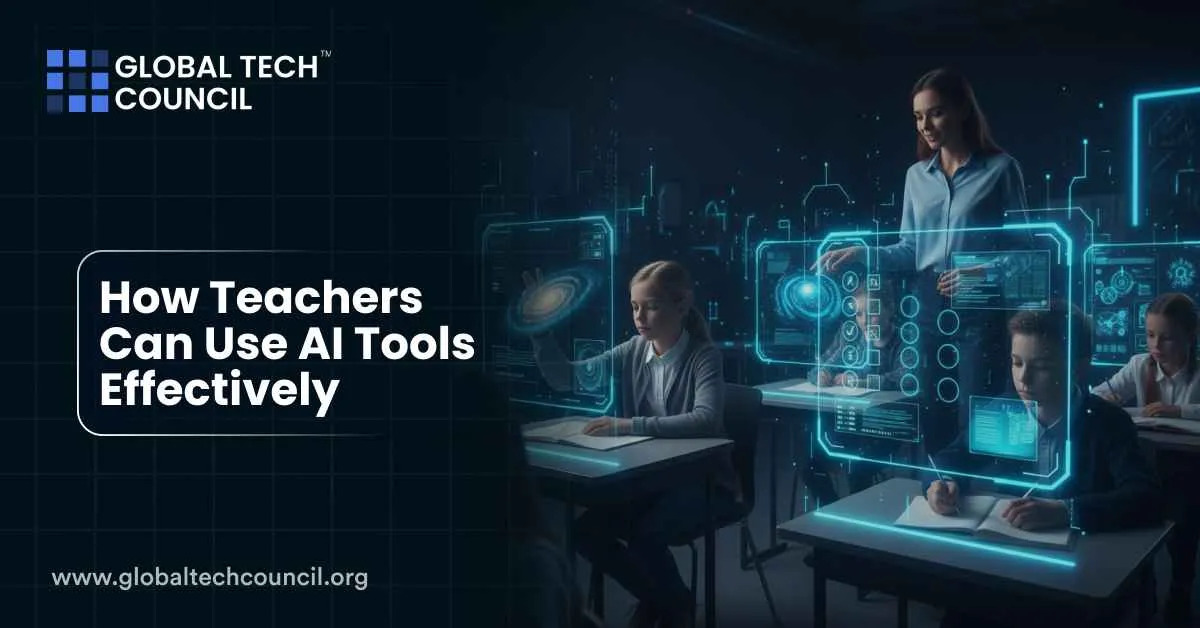
To use these tools confidently, many educators are also exploring pathways such as an artificial intelligence certification. Structured learning helps teachers understand not only how to use AI but also how to apply it responsibly in education. With the right approach, teachers can balance efficiency, ethics, and creativity.
Saving Time on Administrative Work
One of the biggest challenges teachers face is time. AI can draft lesson plans, prepare quizzes, and even generate parent communication templates. Reports show that educators can save hours each week when they use AI for paperwork and planning. This time can then be redirected toward classroom engagement and student mentoring.
Grading and Feedback Support
AI is increasingly used to help with grading. Teachers can feed essays, assignments, or short answers into AI systems and receive draft evaluations or feedback suggestions. While the final judgment remains with the teacher, the tool reduces repetitive marking. This is particularly useful for large classes where personal feedback is otherwise difficult to scale.
Personalized Learning for Students
Every student learns differently. AI platforms can track progress and adapt lesson content based on performance. For example, struggling students may get extra practice, while advanced learners receive challenges. This type of adaptive learning allows teachers to meet diverse needs without overwhelming themselves. Programs like the Data Science Certification also show how analytics skills can support educators in interpreting learning data effectively.
Making Classrooms More Inclusive
AI tools are also supporting inclusive teaching. Text-to-speech, voice recognition, and content simplification features help students with different learning needs. Teachers can now provide equal access to knowledge for learners who may struggle with traditional materials.
AI as a Creative Partner in Classrooms
Far from making learning dull, AI is being used to add creativity. Teachers can ask students to create stories, then use AI tools to turn them into animations or images. Some educators use AI characters to spark discussions in history or science lessons. This keeps students curious and engaged.
Comparison of AI Applications in Teaching
| Area of Use | How Teachers Apply AI | Key Benefit |
| Administrative Work | Drafting quizzes, emails, and lesson plans | Saves hours each week and reduces workload |
| Grading and Feedback | Generating draft evaluations and comments | Supports large classes and ensures timely feedback |
| Personalized Learning | Adapting lessons to student progress | Improves engagement and outcomes for all learners |
| Inclusive Teaching | Using text-to-speech or recognition tools | Provides equal access and supports diverse needs |
This table shows the most practical ways teachers are already using AI today.
Ethical and Responsible Use
Teachers are advised to treat AI as an assistant, not a replacement. This means double-checking responses, teaching students about academic integrity, and encouraging critical thinking. By openly discussing how AI works, teachers also help students develop awareness of both its strengths and limits.
Choosing the Right AI Tools
Different schools use different platforms. Teachers should pick tools that fit their system, whether that is Google Workspace with Gemini or Microsoft 365 with Copilot. Selecting the right tool ensures smooth integration and better privacy protection.
Encouraging Student Collaboration with AI
Some teachers are inviting students to use AI alongside them. By working on prompts together, they show students how to guide AI responsibly. This collaborative approach not only boosts engagement but also models how to use technology critically.
Teacher-Led AI Curriculum Design
Another effective use is co-designing lessons with AI. Teachers can build materials that include ethical discussions about AI, showing students how the technology fits into daily life. This prepares students for a future where AI is a regular part of the workplace.
Practical Classroom Uses of AI Tools
| Purpose | Example Use | Benefit for Teachers |
| Lesson Planning | AI suggests structures and resources | Reduces prep time and sparks new ideas |
| Student Engagement | AI generates images or simulations from text | Makes learning interactive and fun |
| Accessibility | AI adapts content for language or ability levels | Ensures every student can participate |
| Professional Growth | Teachers learn through online AI programs | Builds confidence and new classroom strategies |
This table highlights real-world benefits of AI tools when teachers apply them thoughtfully.
Why This Matters
The rise of AI in education is not about replacing teachers but helping them. The most effective classrooms will be those where human empathy and AI efficiency work side by side. For educators who want to grow with these tools, professional training can make the difference. Those who wish to broaden their expertise in technology can explore Deep tech certification visit the Blockchain Council. Educators aiming to understand data-driven learning can turn to the Data Science Certification. And for those in leadership roles shaping educational programs, the Marketing and Business Certification offers insights into applying AI for strategy and growth.
Conclusion
Teachers can use AI tools effectively by focusing on time savings, grading support, personalized learning, inclusivity, and creative classroom activities. When paired with ethical use and the right tool selection, AI becomes a partner in education, not a replacement. The future of teaching lies in balancing technology with human skills, ensuring that classrooms remain both innovative and deeply personal.
Leave a Reply